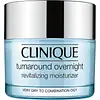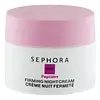What's inside
What's inside
 Key Ingredients
Key Ingredients

 Benefits
Benefits

 Concerns
Concerns

 Ingredients Side-by-side
Ingredients Side-by-side

Water
Skin ConditioningIsostearyl Palmitate
EmollientCetyl Ricinoleate
EmollientDimethicone
EmollientButylene Glycol
HumectantSqualane
EmollientGlyceryl Stearate
EmollientPEG-100 Stearate
Cetyl Alcohol
EmollientStearic Acid
CleansingArginine
MaskingSigesbeckia Orientalis Extract
Skin ConditioningHordeum Vulgare Extract
EmollientCastanea Sativa Seed Extract
Skin ConditioningCucumis Sativus Fruit Extract
EmollientYeast Extract
Skin ConditioningRosmarinus Officinalis Extract
AntimicrobialTrehalose
HumectantSalicylic Acid
MaskingCreatine
Skin ConditioningEthylhexylglycerin
Skin ConditioningPropylene Glycol Dicaprate
EmollientLecithin
EmollientAcetyl Glucosamine
Skin ConditioningHydroxyethyl Urea
HumectantPetrolatum
EmollientHelianthus Annuus Seed Extract
Skin ConditioningArginine Ferulate
Skin ConditioningPolysilicone-11
Tromethamine
BufferingCaprylyl Glycol
EmollientSodium Rna
Skin ConditioningTocopheryl Acetate
AntioxidantGlycerin
HumectantPhospholipids
Skin ConditioningHexylene Glycol
EmulsifyingSodium Hyaluronate
HumectantDisodium Nadh
EmollientMicrococcus Lysate
Skin ConditioningLaurdimonium Hydroxypropyl Hydrolyzed Soy Protein
Xanthan Gum
EmulsifyingAdenosine Phosphate
Skin ConditioningCarbomer
Emulsion StabilisingAscorbyl Tocopheryl Maleate
AntioxidantNordihydroguaiaretic Acid
AntioxidantDisodium EDTA
Sodium Metabisulfite
AntioxidantSorbic Acid
PreservativeChlorphenesin
AntimicrobialPotassium Sorbate
PreservativePhenoxyethanol
PreservativeWater, Isostearyl Palmitate, Cetyl Ricinoleate, Dimethicone, Butylene Glycol, Squalane, Glyceryl Stearate, PEG-100 Stearate, Cetyl Alcohol, Stearic Acid, Arginine, Sigesbeckia Orientalis Extract, Hordeum Vulgare Extract, Castanea Sativa Seed Extract, Cucumis Sativus Fruit Extract, Yeast Extract, Rosmarinus Officinalis Extract, Trehalose, Salicylic Acid, Creatine, Ethylhexylglycerin, Propylene Glycol Dicaprate, Lecithin, Acetyl Glucosamine, Hydroxyethyl Urea, Petrolatum, Helianthus Annuus Seed Extract, Arginine Ferulate, Polysilicone-11, Tromethamine, Caprylyl Glycol, Sodium Rna, Tocopheryl Acetate, Glycerin, Phospholipids, Hexylene Glycol, Sodium Hyaluronate, Disodium Nadh, Micrococcus Lysate, Laurdimonium Hydroxypropyl Hydrolyzed Soy Protein, Xanthan Gum, Adenosine Phosphate, Carbomer, Ascorbyl Tocopheryl Maleate, Nordihydroguaiaretic Acid, Disodium EDTA, Sodium Metabisulfite, Sorbic Acid, Chlorphenesin, Potassium Sorbate, Phenoxyethanol
Water
Skin ConditioningC10-18 Triglycerides
EmollientGlycerin
HumectantDicaprylyl Ether
EmollientCetearyl Alcohol
EmollientCaprylic/Capric Triglyceride
MaskingGlyceryl Stearate
EmollientPolyglyceryl-3 Methylglucose Distearate
EmulsifyingOctyldodecyl Myristate
Emollient1,2-Hexanediol
Skin ConditioningSimmondsia Chinensis Seed Oil
EmollientPolyacrylate Crosspolymer-6
Emulsion StabilisingVaccinium Myrtillus Fruit Extract
Skin ConditioningSodium Acrylates Copolymer
Sodium PCA
HumectantPotassium Cetyl Phosphate
EmulsifyingSaccharum Officinarum Extract
MoisturisingLecithin
EmollientSodium Hydroxide
BufferingPotassium Sorbate
PreservativeO-Cymen-5-Ol
AntimicrobialCitrus Aurantium Dulcis Fruit Extract
MaskingCitrus Limon Fruit Extract
MaskingChlorella Vulgaris Extract
Skin ConditioningTocopherol
AntioxidantHelianthus Annuus Seed Oil
EmollientAcer Saccharum Extract
Skin ConditioningCitric Acid
BufferingWater, C10-18 Triglycerides, Glycerin, Dicaprylyl Ether, Cetearyl Alcohol, Caprylic/Capric Triglyceride, Glyceryl Stearate, Polyglyceryl-3 Methylglucose Distearate, Octyldodecyl Myristate, 1,2-Hexanediol, Simmondsia Chinensis Seed Oil, Polyacrylate Crosspolymer-6, Vaccinium Myrtillus Fruit Extract, Sodium Acrylates Copolymer, Sodium PCA, Potassium Cetyl Phosphate, Saccharum Officinarum Extract, Lecithin, Sodium Hydroxide, Potassium Sorbate, O-Cymen-5-Ol, Citrus Aurantium Dulcis Fruit Extract, Citrus Limon Fruit Extract, Chlorella Vulgaris Extract, Tocopherol, Helianthus Annuus Seed Oil, Acer Saccharum Extract, Citric Acid
Ingredients Explained
These ingredients are found in both products.
Ingredients higher up in an ingredient list are typically present in a larger amount.
Glycerin is already naturally found in your skin. It helps moisturize and protect your skin.
A study from 2016 found glycerin to be more effective as a humectant than AHAs and hyaluronic acid.
As a humectant, it helps the skin stay hydrated by pulling moisture to your skin. The low molecular weight of glycerin allows it to pull moisture into the deeper layers of your skin.
Hydrated skin improves your skin barrier; Your skin barrier helps protect against irritants and bacteria.
Glycerin has also been found to have antimicrobial and antiviral properties. Due to these properties, glycerin is often used in wound and burn treatments.
In cosmetics, glycerin is usually derived from plants such as soybean or palm. However, it can also be sourced from animals, such as tallow or animal fat.
This ingredient is organic, colorless, odorless, and non-toxic.
Glycerin is the name for this ingredient in American English. British English uses Glycerol/Glycerine.
Learn more about GlycerinGlyceryl Stearate is a mix of glycerin and stearic acid.
It is used to stabilize the mixing of water and oil ingredients. By preventing these ingredients from separating, it can help elongate shelf life. It can also help thicken the product's texture.
As an emollient, it helps soften skin and supports barrier-replenishing ingredients.
In cosmetics, Glyceryl Stearate is often made from vegetable oils or synthetically produced.
This ingredient may not be fungal-acne safe
Fun fact: The human body also creates Glyceryl Stearate naturally.
Learn more about Glyceryl StearateLecithin is a term for a group of substances found in the cell membranes of plants, animals, and humans. They are made up of mixture of phospholipids.
This ingredient has emollient and emulsifying properties.
As an emollient, lecithen helps soften the skin and creates a barrier to keep moisture in.
As an emulsifier, it also helps prevent water and oil ingredients from separating. Lecithin can also help ingredients be better absorbed by the skin.
This is because the phospholipids in lecithin produce liposomes. Liposomes help other ingredients get through the skin barrier.
Depending on the source of this ingredient, lecithin may not be fungal acne safe. This is because some sources of lecithin come from soybean oil, which may feed the malassezia yeast that feeds fungal acne.
We recommend reaching out to the brand you are purchasing from to inquire about the source of their lecithin.
Some other names for this ingredient include soy lecithin and deoiled soy lecithin.
Learn more about LecithinPotassium Sorbate is a preservative used to prevent yeast and mold in products. It is commonly found in both cosmetic and food products.
This ingredient comes from potassium salt derived from sorbic acid. Sorbic acid is a natural antibiotic and effective against fungus.
Both potassium sorbate and sorbic acid can be found in baked goods, cheeses, dried meats, dried fruit, ice cream, pickles, wine, yogurt, and more.
You'll often find this ingredient used with other preservatives.
Learn more about Potassium SorbateWater. It's the most common cosmetic ingredient of all. You'll usually see it at the top of ingredient lists, meaning that it makes up the largest part of the product.
So why is it so popular? Water most often acts as a solvent - this means that it helps dissolve other ingredients into the formulation.
You'll also recognize water as that liquid we all need to stay alive. If you see this, drink a glass of water. Stay hydrated!
Learn more about Water